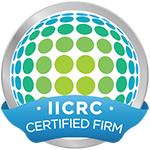After The Flood: What Homeowners Should Do To Fix Water Damage
Experiencing a flood can be an overwhelming and devastating event for any homeowner. The aftermath of a flood can leave […]
Read moreExperiencing a flood can be an overwhelming and devastating event for any homeowner. The aftermath of a flood can leave […]
Read moreWater damage can be a devastating and costly problem for commercial properties. Whether caused by natural disasters, plumbing issues, or […]
Read moreDiscovering mold in your home can be a cause for concern. Not only can it damage your property, but it […]
Read moreWater damage can be a homeowner’s worst nightmare, causing significant structural and financial losses. The key to minimizing the impact […]
Read moreUpholstery plays a crucial role in enhancing the comfort and aesthetics of our living spaces. Whether it’s a plush sofa, […]
Read moreWhen it comes to maintaining a clean and healthy living environment, one aspect that often gets overlooked is the cleanliness […]
Read moreWater damage can be a homeowner’s worst nightmare, causing extensive property damage, structural issues, and potential health hazards. Whether it’s […]
Read more

